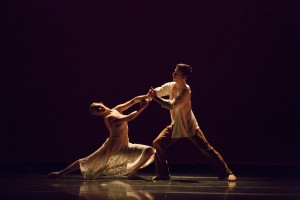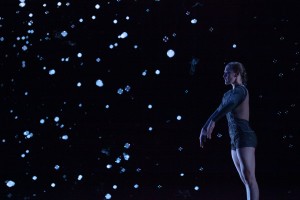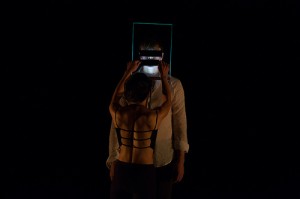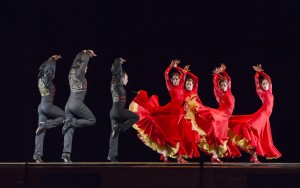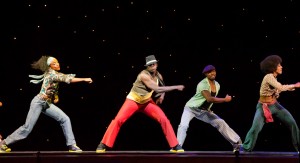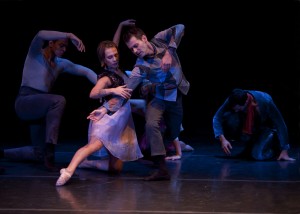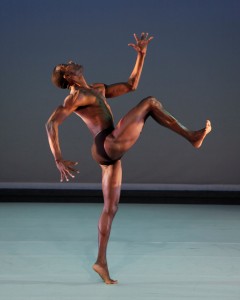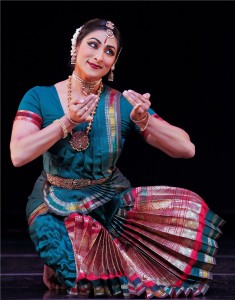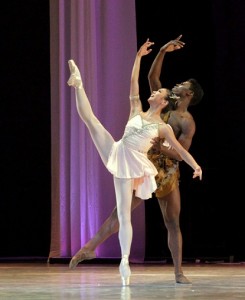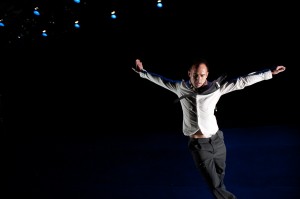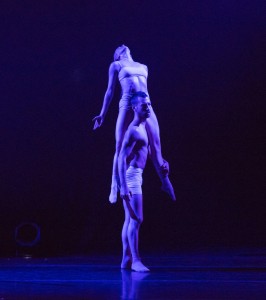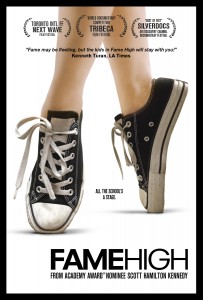This weekend River North Dance Chicago (RNDC) takes the stage of the Harris Theater with their Autumn Passions program. RNDC opened the 2013-2014 season with a shortened gala program on Thursday, Nov. 14 featuring two world premieres, a company premiere and the Harris debut of a 2013 work by Artistic Director Frank Chaves and will perform a full program Saturday and Sunday, Nov. 16-17.
Thursday’s gala performance began with Chaves’ Eva, a suite of dances to jazzed up songs sung by Eva Cassidy. Gorgeous vocal mixed with Chaves’ talent for partnering and duets. Three couples swirled to Cassidy’s rendition of Sting’s Fields of Gold (one of my favorite songs) and although timing was off, it offered a perfect opening for the evening. A hot, hot, hot quintessentially RNDC, Vent-like duet with Jessica Wolfrum and Ahnad Simmons and a lovely side-by-side duet for Lauren Kias (sassy haircut, btw) and Hank Hunter. Eva closed with a feel good, full company section to Wade in the Water – a jazz-meets-Ailey’s Revelations.
It was a gala, so speeches and donation pitches came before the world premiere of Ashley Roland’s Get Out the Ghost. Roland, co-artistic director of BodyVox came to Chicago in July to set the new work. When I popped in to rehearsals, it wasn’t complete, but after seven days was quickly taking shape. “I need to choreograph faster, otherwise my head gets in the way,” she said. Chaves had asked her to create something “ethereal”. The final section of the Americana work dealing with getting rid of personal baggage or “cleaning your own personal house” is ethereal, but as Roland said, you have to get there first. The work began with the movement, although that’s not always how she works. “It comes through me. It’s not manufactured,” said Roland. “It’s definitely a gift.”
Dancers twitch and twist in angsty spurts while pulling shiny gold mylar pieces from their costumes throughout the first two sections. I get the idea, but it was too literal and while the dancers gave it their all, it seemed over-danced. A little less attack, a little more softness would have served the work better. Daring running dives and catches wowed, but overall, the work needed more subtly.
Dancer Drew Fountain is the first dancer other than choreographer Adam Barruch to perform his theatrical solo work The Worst Pies in London set to the song of the same title from the Broadway musical Sweeney Todd. Barruch himself performed it here at the Chicago Dancing Festival in 2011. Fountain was hilarious and charming in this quirky duet with a table. It’s a definite crowd-pleaser.
The world premiere of Dawn by Deeply Rooted Dance Theater‘s Kevin Iega Jeff closed the hour-long show and proved to be a stellar showcase of the dancers’ talents. Set to the driving beat of a version of Carmina Burana, Dawn depicts an intense, physical, ritualistic society with goddess overtones, or as Iega Jeff states in the program notes – “a new Age of Enlightenment”. All gold tones and biceps – and I’m talking about the ladies! – Iega Jeff makes these dancers WORK! It really is non-stop, balls-to-the-walls dancing – just what we’ve come to expect from RNDC. Wolfrum was fierce as a the head of the hierarchy, boldly commanding the stage.
My only regret not going to see the performances this weekend is I will miss the stunning Nejla Yatkin solo Renatus danced by diva Wolfrum and Daniel Ezralow’s SUPER STRAIGHT is coming down, which was originally created for Hubbard Street Dance Chicago (and one of my fave pieces EVER). RNDC’s first attempt at Ezralow’s work didn’t meet expectations (injuries, etc.), but I’m glad they are bringing it back with a different cast. My guess is they will knock it out of the theater this time around.
River North Dance Chicago’s Autumn Passions at the Harris Theater, 205 E. Randolph St., Saturday, Nov. 16 at 8 p.m. and Sunday, Nov. 17 at 3 p.m. Tickets are $30-$75; call 312.334.7777 or visit harristheaterchicago.org.

